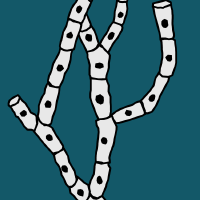Topic Menu
► Topic MenuTopic Editors





2. Mycology Department, Adolfo Lutz Institute Center for Disease Control Secretary of Health, Sao Paulo 01246-000, SP, Brazil
Novel Concepts and Approaches in Neglected, Emerging and Re-Emerging Pathogens: From Environment to Patient
Topic Information
Dear Colleagues,
Infectious diseases have an important impact on public health. For centuries, they have been identified as the main causes of death and sequelae and therefore still present growing challenges for health security and human progress. Over the past few decades, infectious diseases have been significantly correlated with socioeconomic, environmental and ecological factors. The risk of the growth of neglected, emerging and re-emerging pathogens is an even greater threat. Likewise, a close relationship and changes between human, animal and environmental health ("One Health" concept) significantly influence the transmission and distribution of pathogens. Studies of these infections reveal the evolutionary properties of pathogens and their dynamic relationships, quickly adaptation to new hosts due to high rates of multiplication, mutation and selection. Understanding the processes that lead to the emergence of new pathogens can help manage emerging epidemics. The growing risk of co-infections is a major threat to patient’s lives and impacts the health systems. The particular combination of virulence factors, including microbial biofilms, may be a species specific effect which needs to be addressed at molecular level. Molecular tools help in designing newer therapies based on interferences with biofilm formation and thus countering clinical episodes of resistance. Therefore, as the emergence of an infection is a complex and multifactorial issue, a multidisciplinary approach is required.
There is a need for new tools for investigating pathogens, in order to study the host-parasite relationships, regarding their virulence, resistance development and identification. For this purpose, new molecular technologies have launched a new era in pathogen surveillance, using new generation sequencing techniques, implementation of mass spectrometry in microbiology, metagenomic analysis and determination of antimicrobial resistance. Along the same lines, the introduction of new antisense RNA and CRISPR methodologies have made it possible to know not only the functionality of several molecules that participate in host-pathogen interactions, but also to identify new targets to design antimicrobial strategies.
Given recent developments in this field, the purpose of this Topic Board is to highlight aspects related to the novel concepts in diagnostic, molecular, epidemiology, treatment, pathogenesis, etc. and approaches in neglected, emerging and re-emerging pathogens. Then, we examine the nature and scope of emerging and re-emerging microbial threats and consider methods for their control, as well as the dynamic interactions between rapidly evolving infectious agents and changes in the environment and host behavior that provide such agents with new favorable ecological niches.
This topic may be published in the form of comprehensive reviews, original studies, and novel perspectives that address aspects of basic, translational, and applied research to develop countermeasures advance, such as surveillance tools, diagnostic tests, vaccines, and therapeutics, as well as omics tools and advances in nanotechnology in diagnostic, therapeutic and microbial research, and rational drug and vaccine projects that can support research in all the above areas.
Prof. Dr. Maria José Soares Mendes Giannini
Prof. Dr. Angel Gonzalez Marin
Dr. Ana Marisa Fusco Almeida
Dr. Caroline Barcelos Costa-Orlandi
Dr. Marcia S.C. Melhem
Topic Editors
Participating Journals
| Journal Name | Impact Factor | CiteScore | Launched Year | First Decision (median) | APC |
|---|---|---|---|---|---|

Journal of Fungi
|
4.2 | 6.7 | 2015 | 17.7 Days | CHF 2600 |

Microbiology Research
|
2.1 | 1.9 | 2010 | 15.4 Days | CHF 1600 |

Microorganisms
|
4.1 | 7.4 | 2013 | 11.7 Days | CHF 2700 |

Viruses
|
3.8 | 7.3 | 2009 | 17.1 Days | CHF 2600 |

MDPI Topics is cooperating with Preprints.org and has built a direct connection between MDPI journals and Preprints.org. Authors are encouraged to enjoy the benefits by posting a preprint at Preprints.org prior to publication:
- Immediately share your ideas ahead of publication and establish your research priority;
- Protect your idea from being stolen with this time-stamped preprint article;
- Enhance the exposure and impact of your research;
- Receive feedback from your peers in advance;
- Have it indexed in Web of Science (Preprint Citation Index), Google Scholar, Crossref, SHARE, PrePubMed, Scilit and Europe PMC.

